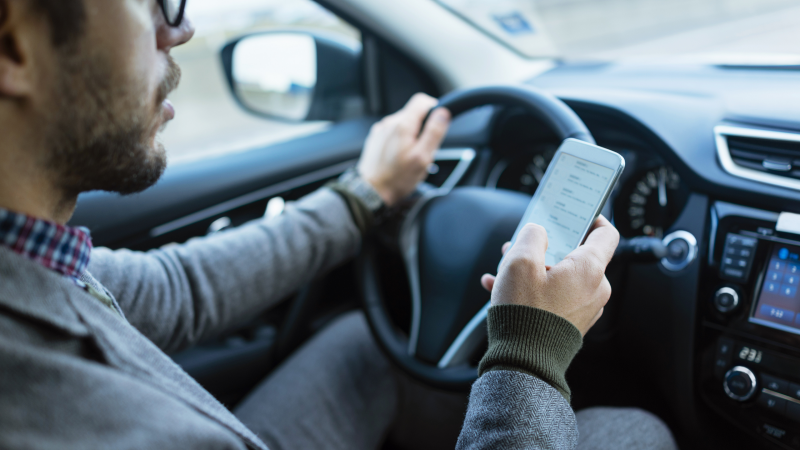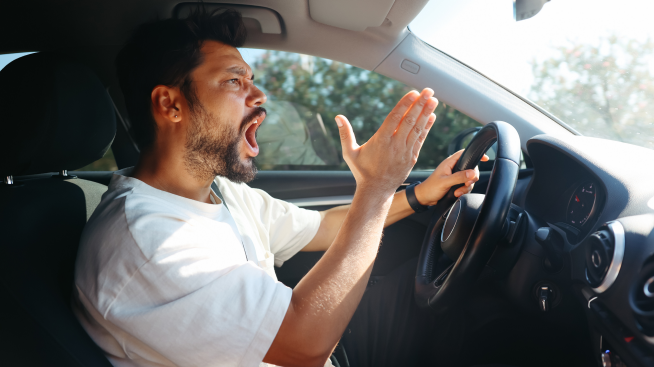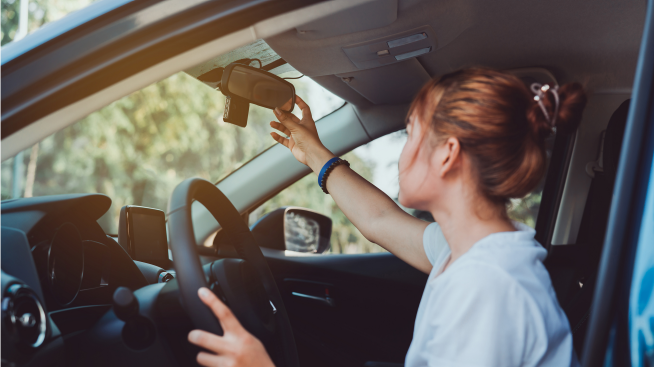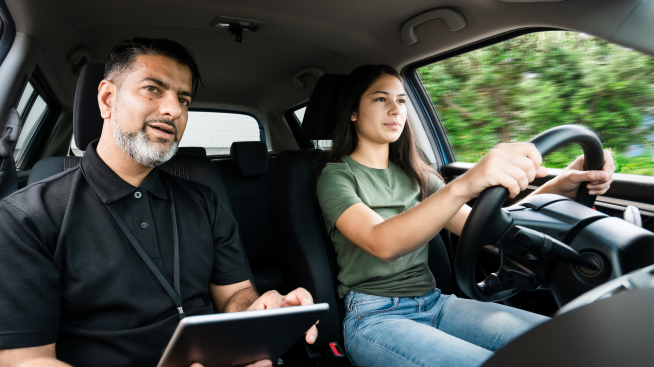Distracted driving: What to know

Six percent of all drivers involved in fatal crashes in 2020 were reported as distracted at the time of the crashes, according to data from the National Highway Traffic Safety Administration (NHTSA). This is a grim statistic, but there are things you can do to help prevent being a part of this serious issue. Distracted driving can take many forms, and learning how to identify it can help you take precautions of your own.
What is distracted driving?
What do loud music, eating a sandwich and adjusting your hair all have in common? They’re all examples of distracted driving, which is any activity — even momentary — that takes your focus away from the road. Other common examples of distracted driving include:
- General noise or activity in the car, possibly from other passengers, kids or pets riding with you
- Checking or adjusting your appearance in the mirrors as you drive
- Engaging your car’s infotainment systems
- Using your phone to call, text, check social media or use any other apps
Broadly speaking, distractions can be categorized as:
- Visual: A distraction that causes the driver to take their eyes off the road.
- Manual: A distraction that causes the driver to take their hands off the wheel.
- Mental: A distraction that causes the driver to take their mind off the task of driving safely.
The dangers of distracted driving
Driving safely requires your full attention; you need to be able to see, hear and react to everything around you. Drivers who lose focus are at an increased risk of getting into or causing an accident. This is a danger not just to other vehicles, but also to pedestrians, bicyclists and anyone else who may be on or near the road.
While any distracted driving is less than ideal, there are degrees of danger to different distractions.
Texting and driving
Of all the possible types of distracted driving out there, texting and driving is one of the worst. NHTSA data indicates that 12% of distraction-affected fatal accidents are caused by cell phone usage. Texting, in particular (and more recently, using or posting to social media), serves to distract the driver on all three fronts: visual, manual and mental. Most states have laws in place limiting or banning texting while driving, so even if you avoid physical danger there are still legal ramifications to consider.
Financial dangers of distracted driving
In addition to the physical and legal dangers of distracted driving, there may be financial consequences. Damage caused by an accident due to your own distracted driving will likely need to be covered by your insurance and may raise your premiums. Even if you avoid accidents, traffic violations could still end up raising your insurance rates. Additionally, you may have to pay hefty traffic fines.
Tips to help limit distracted driving
While it may be difficult to control other distracted drivers on the road, there are a few things you could potentially try to limit your own instances of distracted driving. These include:
- Using text- or phone-blocking apps that will lock your phone from use while you’re driving. There are several options to choose from on the web. Some may even have auto-respond features that let people know you’re driving.
- Asking a passenger to assist with navigation duties.
- Limiting eating and drinking to before or after you're behind the wheel.
- Making playlists for the car so you don’t get distracted searching for the perfect song.
- Pulling off the road if you’re feeling drowsy.
- Using modern car safety features, such as lane departure warnings and automatic braking.
As a passenger, if you notice the driver engaging in distracted driving, consider speaking up (politely) — it's in both your best interests.
In summary
Distracted driving is a danger to you, other motorists and even pedestrians. Taking steps to minimize your distractions while driving, such as putting away your phone or using hands-free technology, can go a long way to keeping you and others safe as you drive.



